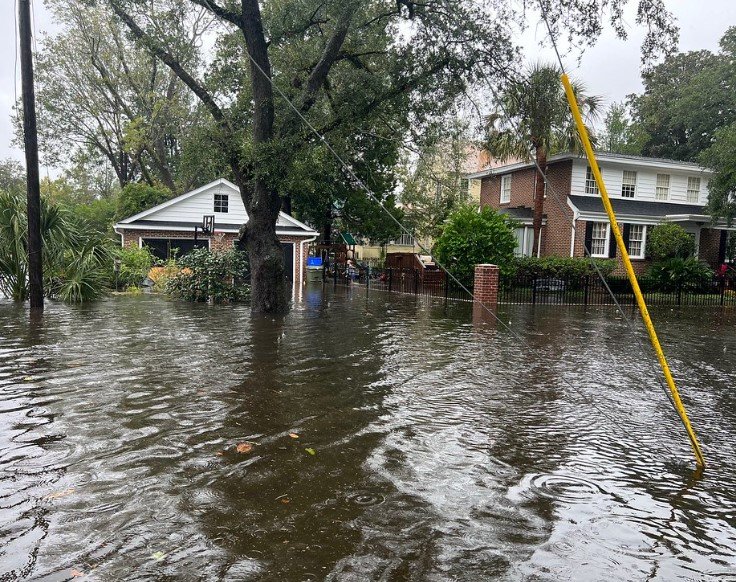A new virtual reality experience is putting coastal residents face-to-face with one of nature’s deadliest forces — storm surge — in a bid to boost preparedness and save lives.
A Digital Wake-Up Call for Coastal Communities
Hurricanes are nothing new for those living near the coast. But knowing a storm is coming and truly grasping the raw, destructive force of storm surge are two different things. That’s where “Weather the Storm” steps in. Developed by the University of Georgia alongside Clemson University, Georgia Sea Grant, South Carolina Sea Grant, and NOAA, this VR simulation aims to do more than just inform — it immerses users in the heart of the danger.
Imagine standing in your living room as water crashes through the windows, furniture floats past, and the sound of wind howls louder than you ever thought possible. This is what the simulation replicates. It’s not just a video or a warning — it’s an experience designed to stir an emotional, visceral reaction, pushing people to take evacuation orders seriously.
“Virtual reality simulations can be very useful for emergency preparedness training,” says Sun Joo “Grace” Ahn, director of UGA’s Center for Advanced Computer-Human Ecosystems. “They provide visceral experiences of natural disasters that are more detailed and emotional than traditional media.” In other words, seeing is believing — and feeling it might be the push people need to act.

From Research to Reality: The Partnership Behind the Project
This isn’t your average tech project. It’s the result of a powerful collaboration between academic institutions and government agencies, each bringing a unique expertise to the table.
- University of Georgia spearheaded the simulation’s development.
- Clemson University contributed research and technological support.
- Georgia Sea Grant & South Carolina Sea Grant provided insight into coastal community needs.
- NOAA ensured the simulation was backed by real-world weather data.
The goal? To turn research into action. With rising sea levels and more intense storms becoming the norm, time is of the essence. Coastal residents, particularly those in high-risk zones, need realistic, impactful resources to understand the gravity of storm surge.
The Devastating Toll of Storm Surge — By the Numbers
Statistics tell a grim story. Storm surge has long been the deadliest aspect of hurricanes. Between 1963 and 2012, it was responsible for 49% of direct deaths from Atlantic tropical cyclones, according to the National Hurricane Center. Improved forecasting and public awareness brought that figure down to 11% from 2013 to 2022 — progress, but not victory.
Hurricane Ian was a tragic reminder of the lingering danger. In 2022, storm surge claimed 41 lives in Florida alone, demonstrating that despite better communication and technology, too many people still underestimate the threat.
Here’s a quick breakdown of storm surge fatalities over the decades:
| Time Period | % of Deaths from Storm Surge |
|---|---|
| 1963 – 2012 | 49% |
| 2013 – 2022 | 11% |
| Hurricane Ian (2022) | 41 direct deaths |
The numbers highlight progress but also underscore why simulations like “Weather the Storm” are crucial. Complacency and misinformation can be as dangerous as the storms themselves.
More Than Just a Simulation: Practical Tips Included
The VR experience doesn’t stop at showing the destruction — it also educates. As users watch water levels rise, they’re presented with practical, life-saving tips. It’s not enough to know a storm is coming; preparation is key.
Some of the advice includes:
- Keep essential supplies like batteries, flashlights, and drinking water readily available.
- Secure important documents in waterproof containers.
- Plan multiple evacuation routes and communicate them with family.
By combining emotional impact with actionable advice, the simulation hopes to engrain these habits deeper than any brochure or website ever could.
The Future of Emergency Preparedness
Could VR simulations like “Weather the Storm” become a standard tool for hurricane preparedness? Many experts believe so. As technology advances, there’s potential for even more immersive, personalized experiences tailored to specific regions or home layouts.
For now, this project represents a significant leap forward — a merging of cutting-edge tech and public safety efforts. Coastal residents now have more than warnings to rely on; they have a virtual front-row seat to the reality of storm surge. And sometimes, seeing — and feeling — is believing.
